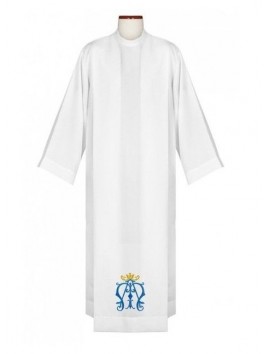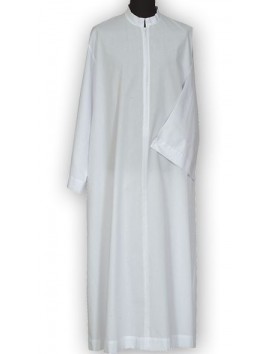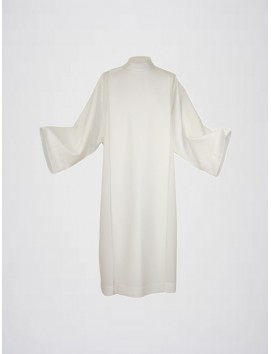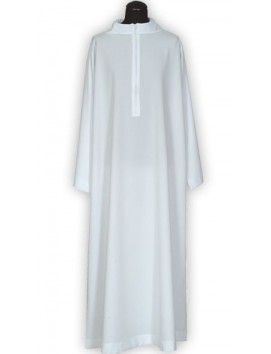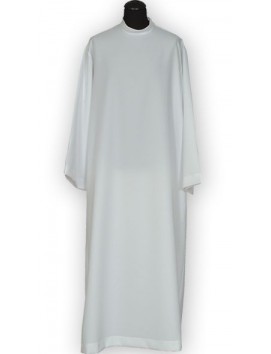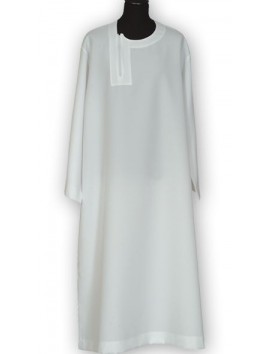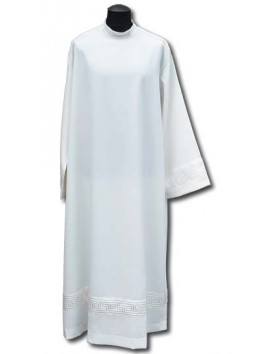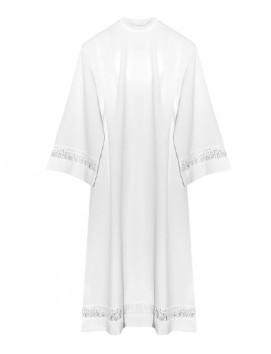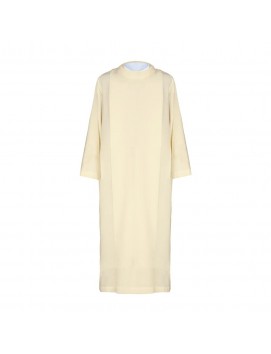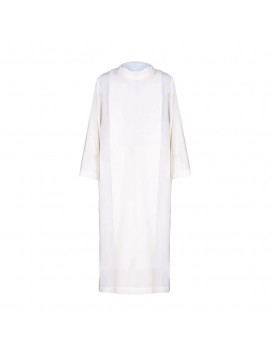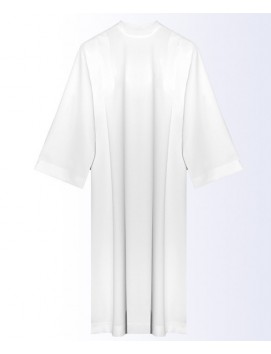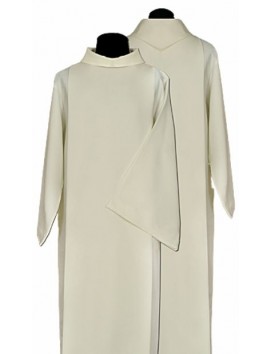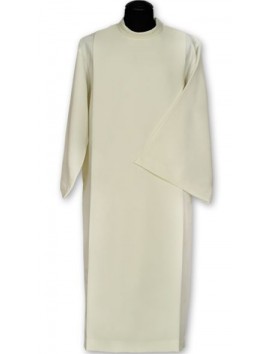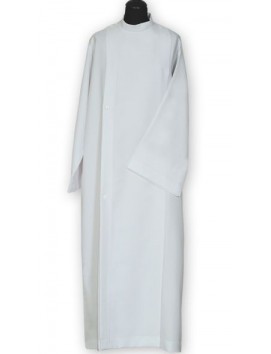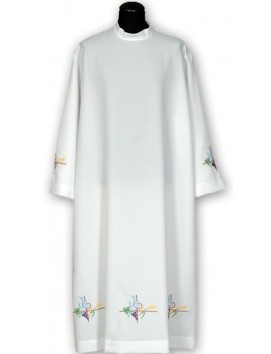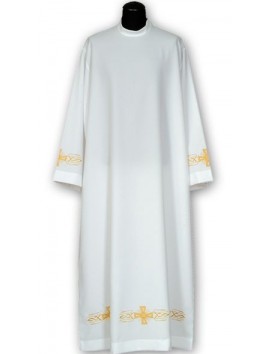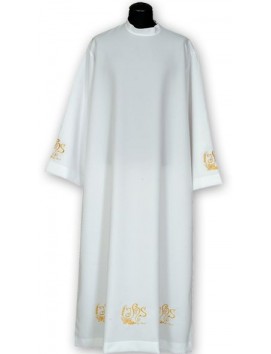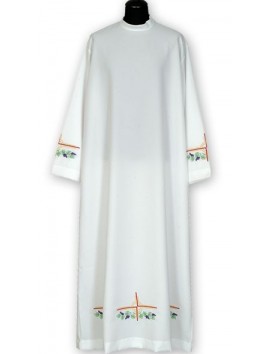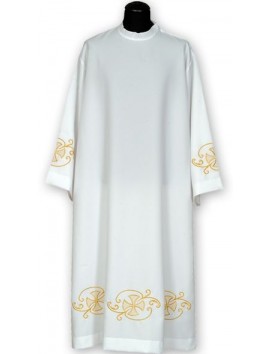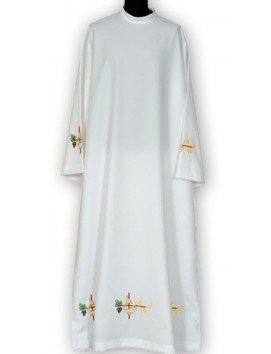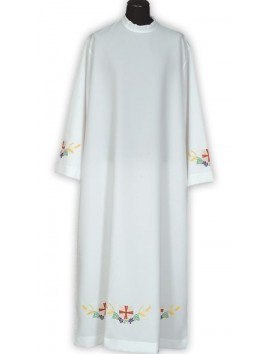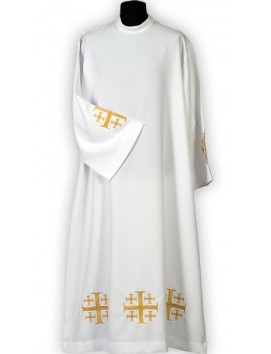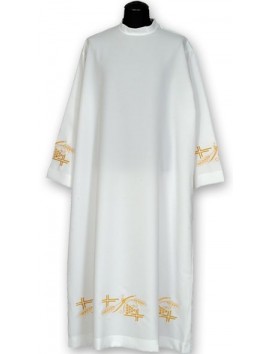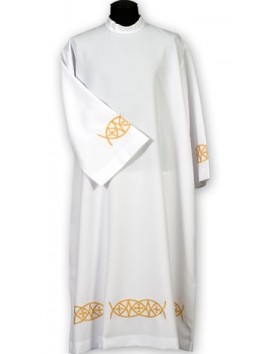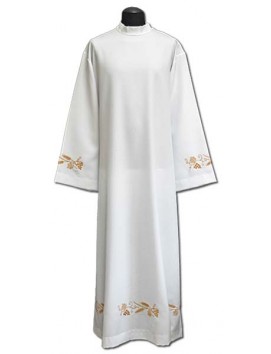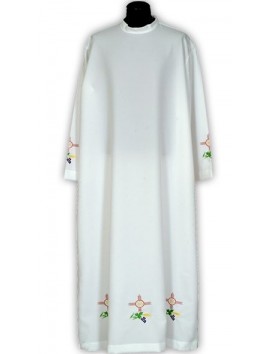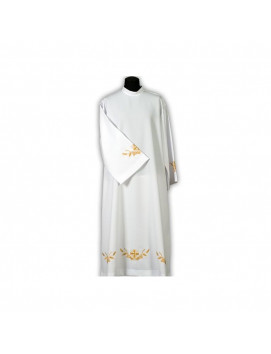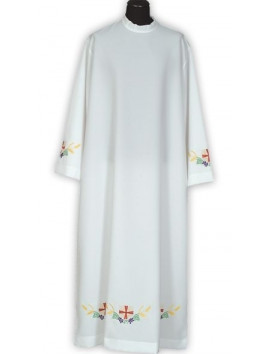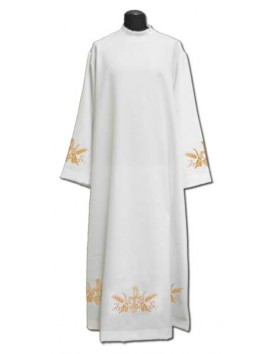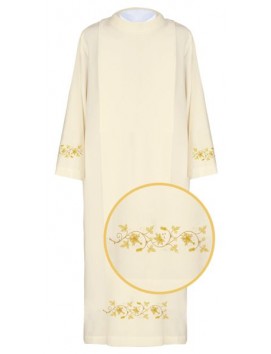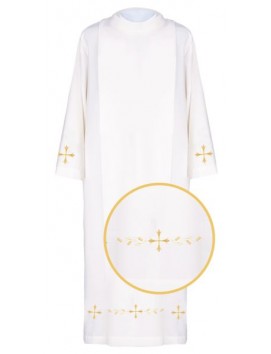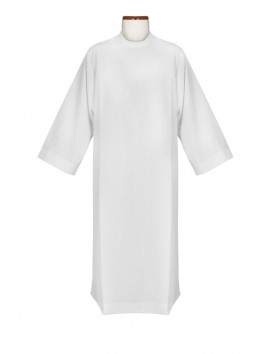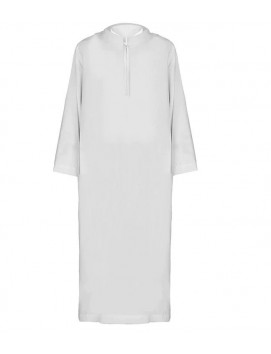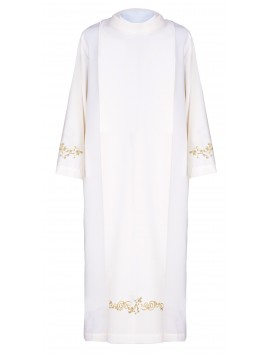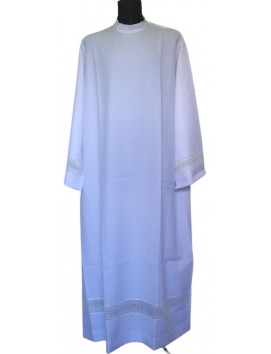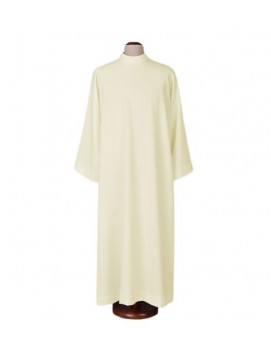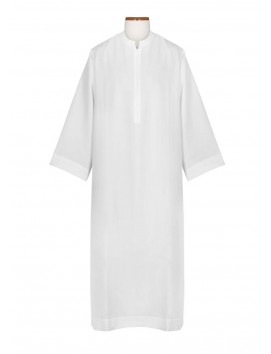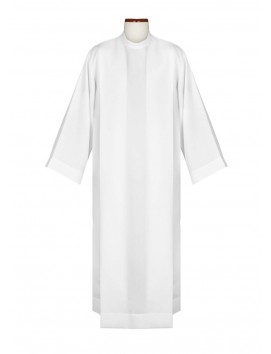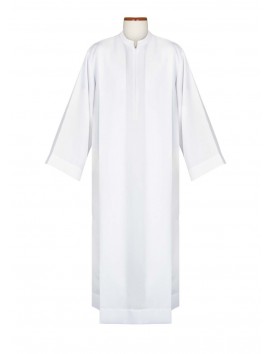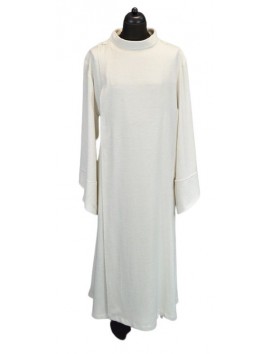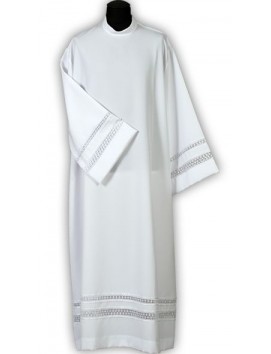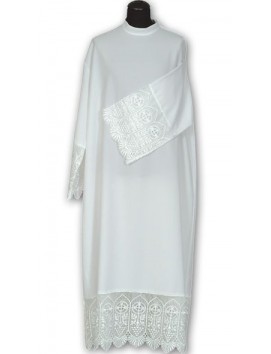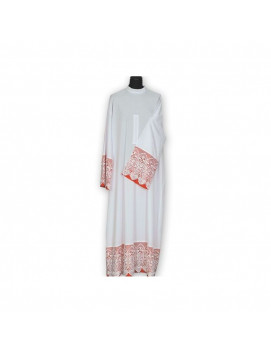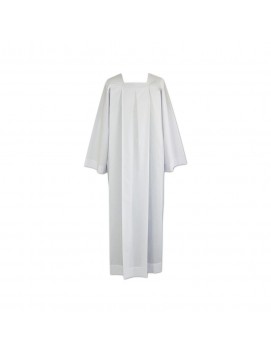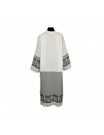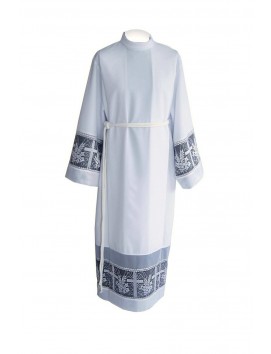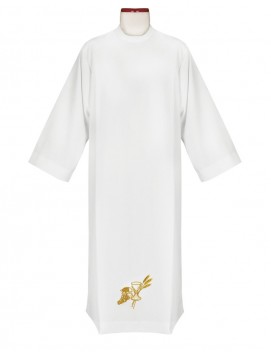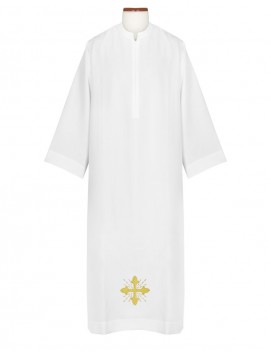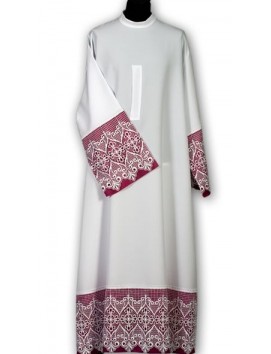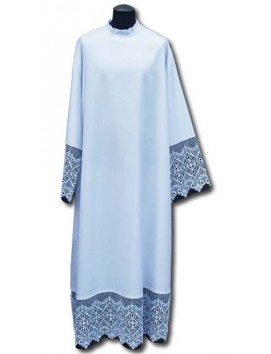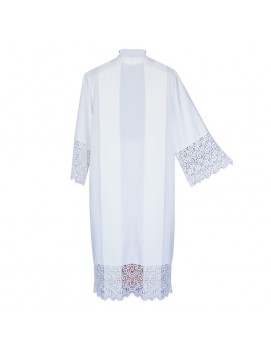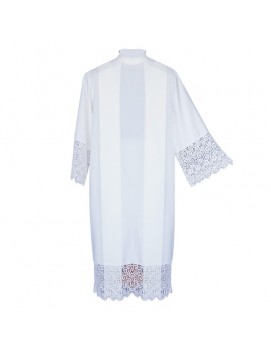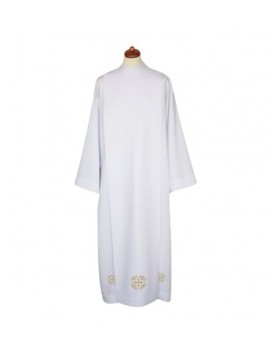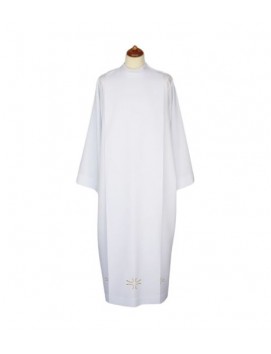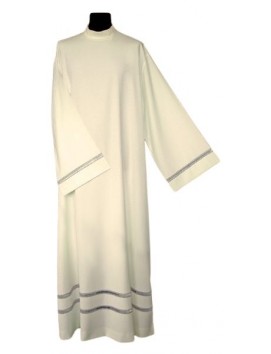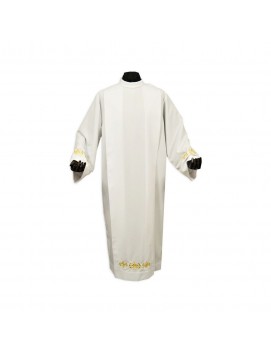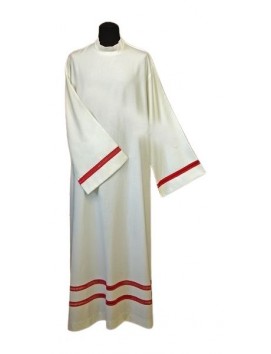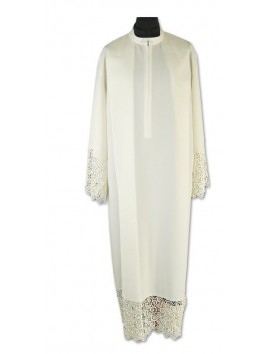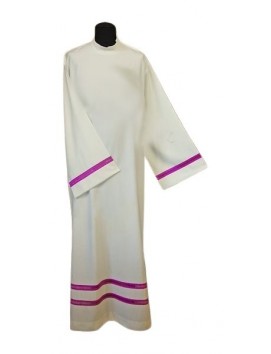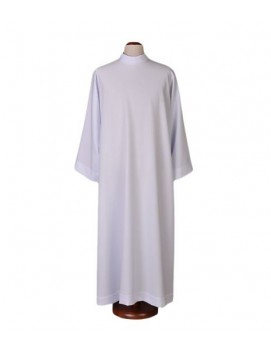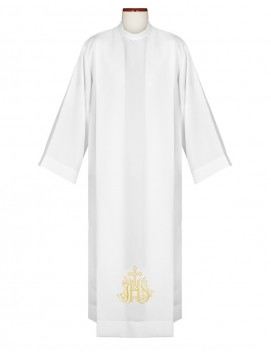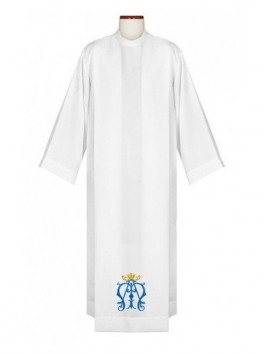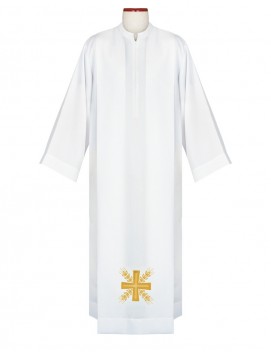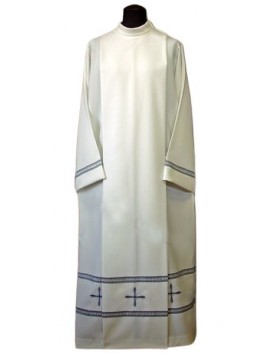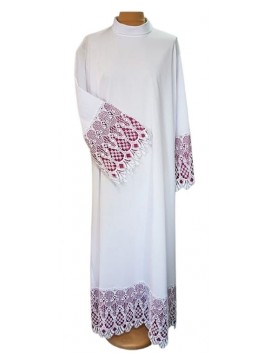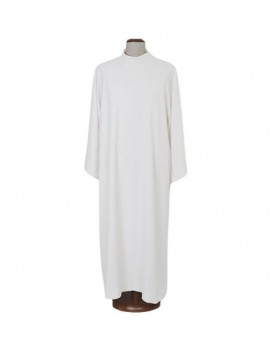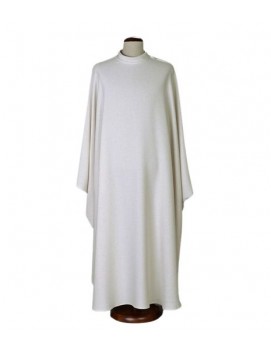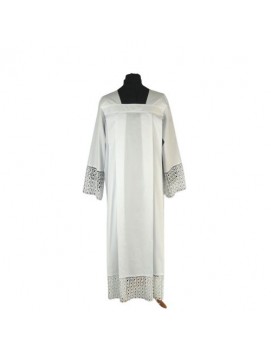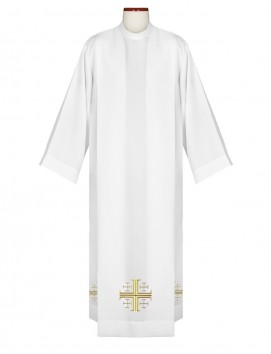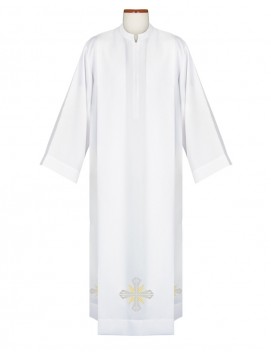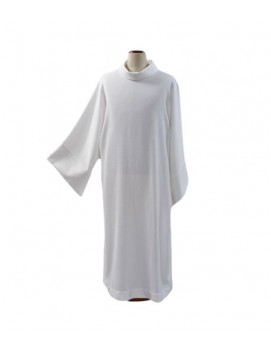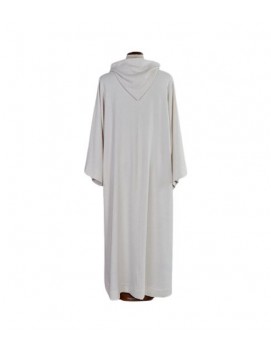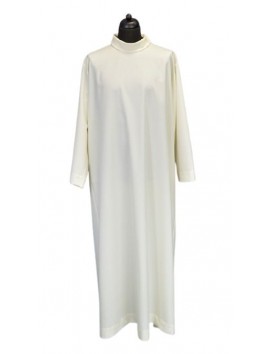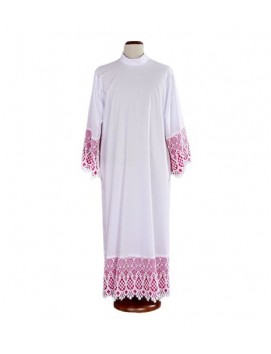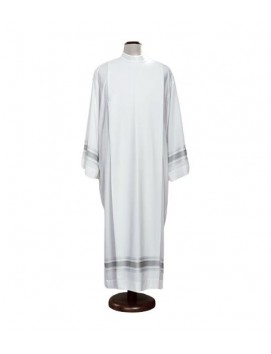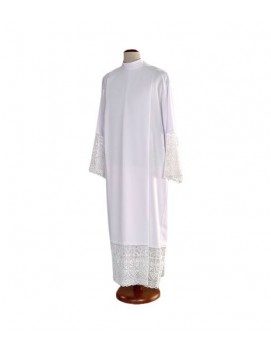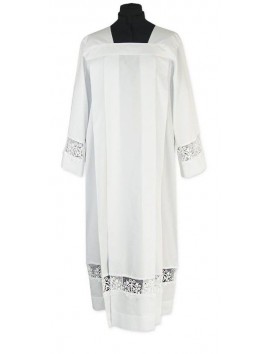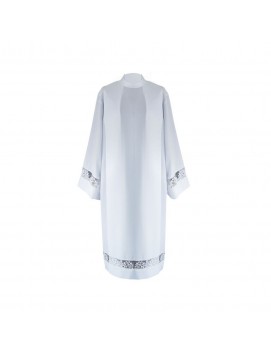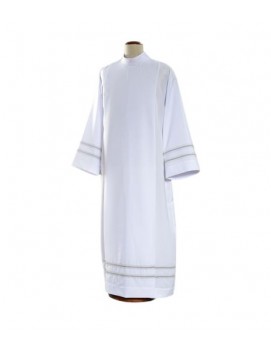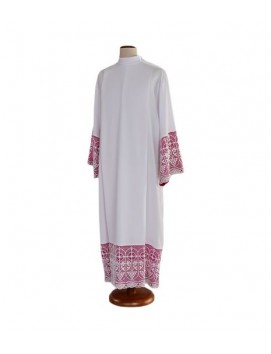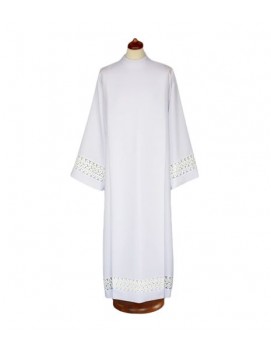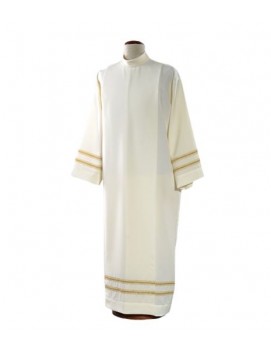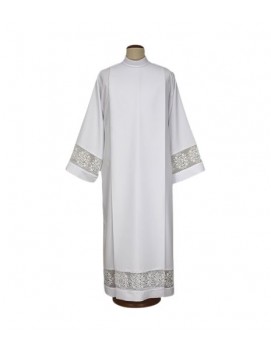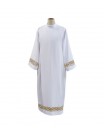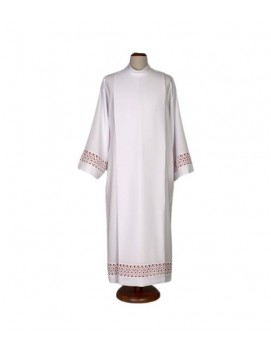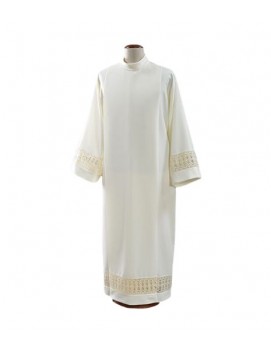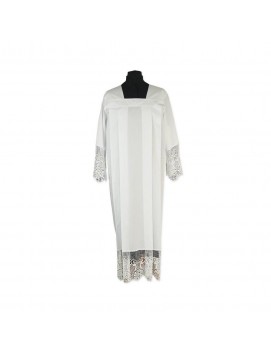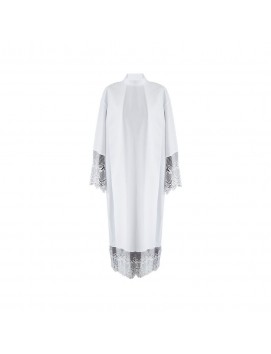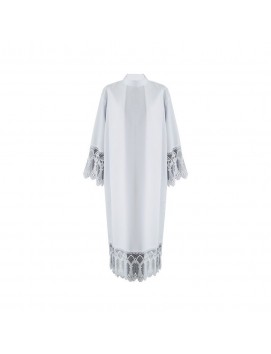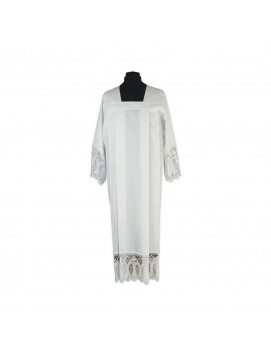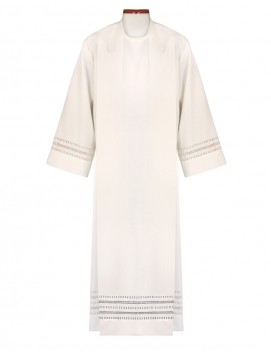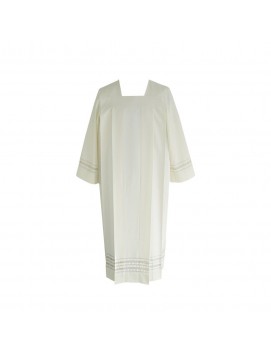No products
Clergy Albs
Clergy Albs are a type of liturgical vestment worn by many different churches, including the Roman Catholic, Lutheran, Methodist, and Anglican churches. It is a full-length, long-sleeved, usually white linen tunic secured at the waist by a cord or belt called a cincture. The alb is intended to imitate the ordinary look of first-century clothing, and was first used by the Christian church. It was also worn immediately after a baptism in the first four centuries of the Church, and to this day, the alb is meant to be a reminder of baptism.
Clergy Albs are a type of liturgical vestment worn by many different churches, including the Roman Catholic, Lutheran, Methodist, and Anglican churches. It is a full-length, long-sleeved, usually white linen tunic secured at the waist by a cord or belt called a cincture. The alb is intended to imitate the ordinary look of first-century clothing, and was first used by the Christian church. It was also worn immediately after a baptism in the first four centuries of the Church, and to this day, the alb is meant to be a reminder of baptism.
-
Priest's alb with guipure insert (04) Priest's alb with guipure insert (04)
Priest's alb with guipure insert (04) Priest's alb with guipure...
$ 117 -
Embroidered priest's alb (5) Embroidered priest's alb (5)
Embroidered priest's alb (5) Embroidered priest's alb (5)
$ 127
The priest alb is a traditional liturgical vestment that plays a significant role in various Christian denominations, including Roman Catholic, Anglican, and some Lutheran churches. It is a symbol of purity and is typically a full-length, long-sleeved, white linen tunic secured at the waist by a cord or belt known as a cincture.
Historical Significance
The term "alb" was first used around 400 A.D., and it became the official clerical apparel of the ministering deacon, baptism garments, and everyday attire for bishops and priests. The alb's origins can be traced back to the tunica talaris, a garment used by deacons during worship services after Christians gained the freedom to openly practice their faith around 313 A.D.. By the 6th century, the alb had become a distinct vestment for Christian clergy, differentiating from the secular styles of the time.
Evolution and Design
Over the centuries, the design of the alb, a clerical apparel garment, has seen various changes. In the 10th century, albs were often decorated with embroidery on the hem and cuffs. Later, rectangular patches of embroidery called parures or apparels were added. These apparels became less common in the 16th century and were replaced by lace, which eventually covered most of the garment. In the 20th century, with the Roman Catholic liturgical renewal, the plain white linen alb came back into use.
Symbolism and Use
The alb signifies purity of the mind, heart, and body, and is a representation of the garment in which Jesus was mocked by Herod. It is worn over the cassock and under special garments such as the stole, dalmatic, or chasuble during Mass and other liturgical services. The alb is also a reminder of baptism, as it was traditionally worn by the newly baptized in the early centuries of the Church.
Modern Adaptations
Today, the alb is the common vestment for all ministers, both clerics and laypersons, at Mass. It is worn underneath any other special vestments and clerical apparel, and is often accompanied by an amice if the alb does not completely cover the collar. Variants like the chasuble-alb and cassock-alb, combining features of traditional vestments and clerical apparel, have been developed for convenience and adaptability to different climates.
FAQs
Who wears an alb?
An alb is most commonly worn by ministers during Mass, but it can also be worn by clerics, laypersons, or anybody else who leads worship services.
How should an alb fit?
An alb should be long and reach the ankles but not go past them. It is often secured with a rope cincture around the waist.
Can albs be decorated?
Yes, historically, albs have been decorated with embroidery, apparels, and lace. However, the extent of decoration has varied over time, with a return to simpler designs in the 20th century.
Are there different types of albs?
Yes, there are variations such as the chasuble-alb and cassock-alb, which combine features of other vestments with the alb for specific needs or climates.
In conclusion, the priest alb is a vestment rich in history and symbolism, reflecting the purity and dedication required of those who serve in the church. Its design and use have evolved over time, but its significance remains a central part of Christian liturgical tradition.

